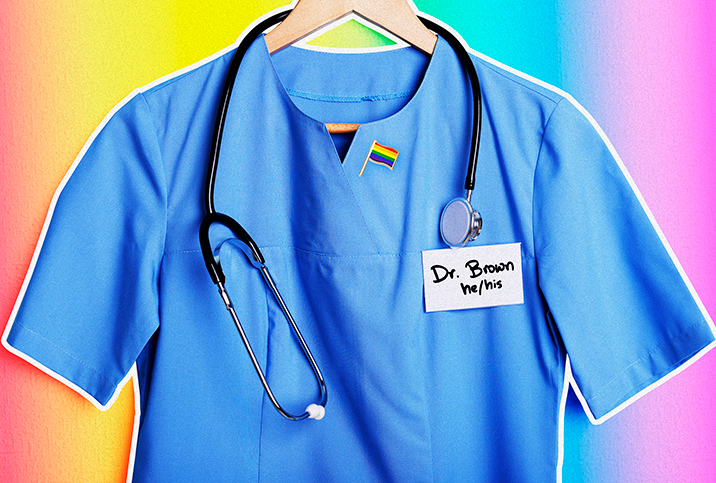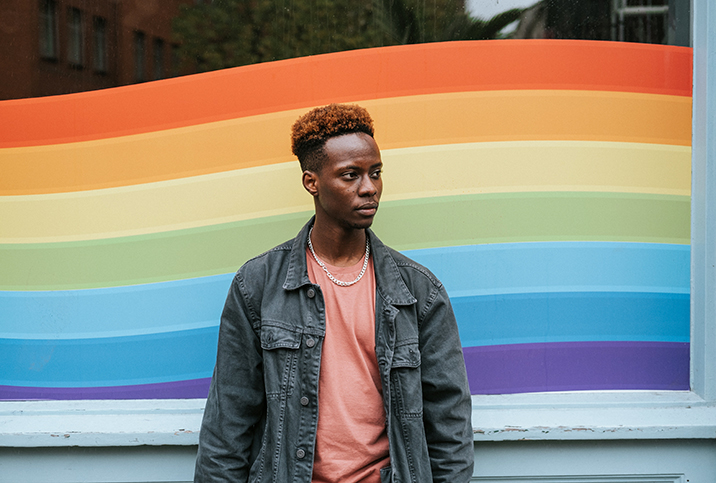How to Find an LGBTQ-Friendly Family Doctor

For Alex Beene, a 34-year-old gay man living in Nashville, Tennessee, finding a family doctor who can relate to health problems more prevalent in the LGBTQIA+ community is "absolutely essential."
Beene, a children's book author, said it's critical for prospective patients to have a direct conversation with family doctors in which they explain their sexual identity and how it pertains to health.
"There's no easy way around it," Beene said. "You can try to look at feedback online about the doctor or gain suggestions from friends and family, but at the end of the day, this has to be the basis for forming a mutual understanding between you and your physician about your background and how it can affect the health-related issues you are going to seek guidance on."
Traditionally, some members of the LGBTQIA+ community have been hesitant to use the healthcare system openly and consistently because of a history of distrust bred from practices rooted in discrimination. Furthermore, people in this community are at greater risk for a variety of health issues, including depression, substance abuse, heart disease and HIV/AIDS. Therefore, Beene believes it is vital for LGBTQIA+ people to enlist a doctor who understands the health issues that disproportionately affect them.
"You have to find a doctor who understands the importance of examining you in these areas and, more importantly, helping you cope with the anxiety you can often feel," Beene said. "Often, the mental toll it takes can be just as difficult as any possible physical problems you encounter."
Tips for finding the right doctor
Finding a physician who is open to partnering with LGBTQIA+ patients is crucial, according to Scott Nass, M.D., a family physician in the San Francisco Bay area.
"What most patients are really looking for fundamentally is somebody who is willing to listen—not judge, nobody wants to be judged—and really meet them where they are," Nass explained. "It's important for family physicians to know the same things about a person that they would know if they weren't LGBT: about their family, who they live with, who they hang out with, what they do in their social time, what they do in terms of their sexual practices. Each of these things can either be protective in terms of helping someone stay healthy and well, or contribute to risks for certain conditions or be likely to be screened for something appropriately."
Nass was formerly president of GLMA: Health Professionals Advancing LGBTQ Equality, which operates a provider directory for LGBTQIA+ patients, who can rest assured the providers listed are committed to creating a welcoming environment.
"We're relaunching this year in partnership with the Tegan and Sara Foundation," said Nass, who remains a board member of GLMA. "We're currently going through the process of redesigning everything now, and we're hoping to have a soft launch around June for Pride Month."
Compare the information you get from family and friends with online directories and reviews.
Asking your LGBTQIA+ friends and family members for doctor recommendations is a simple first step, according to Scott Bertani, director of advocacy for HealthHIV, a nonprofit organization in Washington, D.C., advancing prevention, care and support for people living with or at risk for HIV.
"You can talk with basic primary care specialists and say, 'Here are some of the issues that I have, can you refer me?'" Bertani said. "That's important to have that human touch to the health systems that you work with because not all of us live in an urban market. Some of us live in the farther suburbs or rural [areas], and our local connections matter."
Bertani recommended comparing the information you get from family and friends with online directories and reviews.
"I think you have to do the individual research," he said. "That's often difficult to do for individuals who are at the margins."
Paul Pavlov, M.D., a family doctor in Biloxi, Mississippi, agrees that LGBTQIA+ friends and family should be your first source when finding a family doctor.
"Do they like them? Do they treat them with respect and the dignity that they deserve? Personal references are very important," he advised.
Watch for these red flags
One potential red flag that could illustrate how a family doctor is not an LGBTQIA+ ally can be found on intake forms. An absence of questions about sexual orientation and/or gender identity could indicate your provider is not inclusive of the community, Bertani explained, adding that acceptance of LGBTQIA+ patients isn't enough; a doctor needs to be "openly affirming" and "culturally confident."
"You also have to be knowledgeable about lots of the specific health risks and concerns that affect our community individually," he added. "While we are not a monolith, there are similarities and patterns that we do expect with our providers, and one of the most perfect examples is a stigma-free environment."
Beene said when you have initial conversations with a family doctor, it's important they do not make you feel like an outsider.
"If you hear the phrase, 'I've never dealt with the situation before' or 'The majority of my patients don't have this issue, so it's new to me,' I immediately think, 'This is not a good fit,'" Beene said. "Confronting LGBT medical issues in that setting can already be intimidating in many situations, but to have the doctor make you feel like you're the odd patient out based on the majority of his or her patients not being LGBT is unsettling."
Pavlov said it's important to watch for microaggressions, too, those subtle but hurtful insults or prejudices. Examples include assuming a patient's gender pronouns and not asking how the person identifies, making stereotypical assumptions based on the patient's appearance, and presuming heterosexuality, such as asking a woman about her boyfriend or husband.
Rather than red flags, look for positive indicators.
A hesitance to respond when asked if they are willing to work with patients of all sexual orientations and gender identities is also a telling clue, Nass said.
"Obviously, if someone states that they don't believe that sexual orientation or gender identity can be anything other than straight man/woman, then that's a huge red flag, but people tend to be a little more veiled in their language these days," he added.
Rather than red flags, Nass said looking for positive indicators is more helpful and can protect your mental well-being throughout your search.
"Does the website have inclusive language or inclusive pictures? Are their pronouns listed on the website? If you're visiting in person or walking through, do you see magazines that someone who is LGBT might be more likely to read?" he asked. "Or do you see photos on the wall representing families that are the traditional picture we see of husband, wife and two kids?"


















